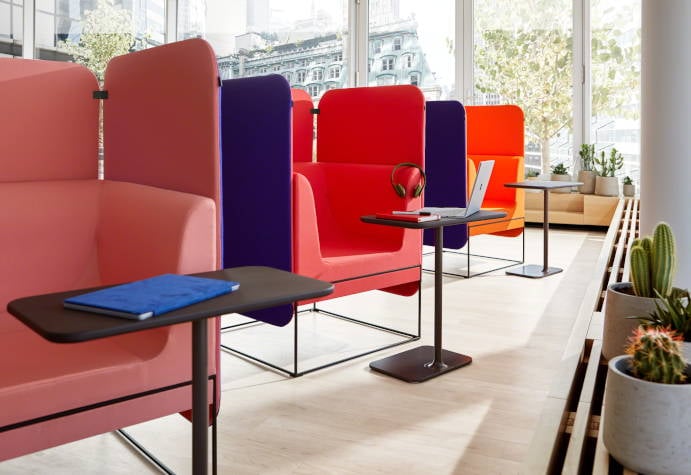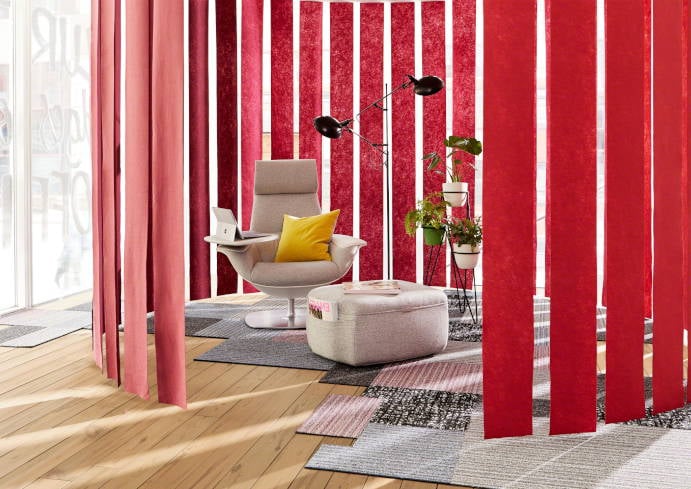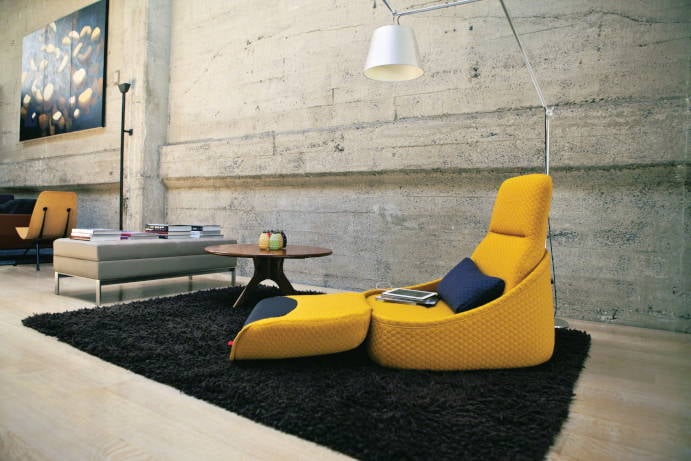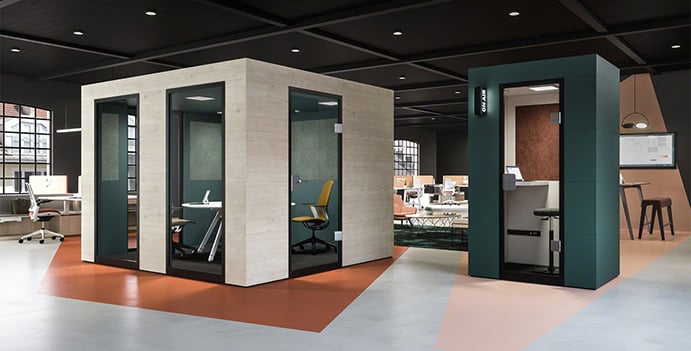There are lots of acronyms and buzzwords appearing in discussions about workplace design right now; New Ways of Working (NWoW), Agile SCRUM, Kanban, Kaizen, and Activity Based Working (ABW) are just a few of them.

At their worst, they can be vague promises of change to working practices that leaders can bandy about in meetings; half-understood ideas to implement piecemeal in the hope of cutting costs.
At best, however, they represent concepts that managers can actively engage with to bring value and much needed change to the organisations they lead.
But transforming a buzz word into a meaningful new approach can take commitment, time and resource - and there always has to be a clearly understood business case for making the change.
And this is true of Activity Based Working.
What is Activity Based Working (ABW)
Activity Based Working does away with ideas of individual ’ownership’ of space and workstations in the office. Instead, it gives employees free access to a variety of zones suitable for different kinds of task: including collaborating, focusing, learning and socialising. ABW provides spaces where different kinds of work activity can be pursued more successfully - and helps an office become a more effective hub for collaboration and productivity.
ABW: the workplace reimagined
ABW acknowledges the fact that people want and need to work in different ways throughout the day and the week - and that the nature of their work often does not require them to work in the office at all.
Businesses are finding that the connectivity offered by the digital revolution, employees demands for more flexible working and their own desire for greater efficiencies, can lead to a complete reimagination of the function of the office through ABW.

In these arrangements desks are no longer conceived as ‘nests’ belonging to one individual exclusively - the base to which they continually return. Instead the traditional office building and its contents can become transformed into a communally owned, flexible hub for gathering, information exchange, collaboration and collective inspiration.
ABW case study
When a large insurance group (profiled here by PWC) came to their end of their building lease, they planned a new approach to increase productivity while streamlining their real estate requirements.
Using a radical ABW model, the number of traditional work stations available for employees were reduced while each team member was permitted to work from home for two days every week.
Meanwhile, the office was reconfigured as a suite of connected spaces allowing employees to choose where they could best perform the tasks they needed to complete each day they were present.
Spaces ranged from quiet and contemplative to buzzy and social, some were geared for the reception of visitors and clients, all of them used technology to deliver a truly flexible and a paperless working environment. Different kinds of furnishing - desks, chairs, sofas and benches allowed employees to adopt a range of postures and harness different energies to support the tasks they were pursuing.
Switching to Activity Based Working models like this necessitates trust, connectivity, responsibility and autonomy to be successful - and it requires careful planning and execution to realise all its potential benefits.

But it’s not for everyone
A detailed piece of research by Leesman shows that there are types of worker and job roles that do not seem to thrive within the more nomadic environment provided for in ABW designs.
Workers with jobs that focus around fulfilling one task typically do not see any improvement in their performance when they switch to these environments.
Further, some personality types, including the ‘camper/squatter’ and ‘Timid Traveller’ will tend to subvert the principles of ABW by refusing to hot desk or simply by finding themselves unable to do so. Leesman argues that upto 40% of workers could fit into this category.
Confidentiality
While these environments score highly for facilitating more creativity and collaboration, the ABW working model unsurprisingly does not perform well for those who need to have ‘confidential business discussions’ as part of their routine work. Using solutions like insulated ‘office pods and booths’ could be an answer to this limitation.

Keeping it paperless
An ABW environment should be endlessly flexible, it should let teams move seamlessly through their working day, connecting their devices wirelessly when necessary, sharing materials digitally on large screens in meetings and presentations at will.
As a result, almost all ABW spaces record lower than average satisfaction figures when it comes to working extensively with papers and physical materials. The need to ‘spread out’ or store extensive papers and real world documents in one place can curtail the utility of ABW spaces. Organisations moving to ABW need to assess the importance of these kind of activities to their employees and decide if reducing reliance on paper is achievable, or even appropriate in their case.
Plan it properly
Those transitioning to ABW office models need to ensure they consult and communicate effectively with their workforce as part of their design process. Understanding the proportion of people who will need access to quieter areas with more formal desk arrangements, as against those who will respond enthusiastically to a more nomadic office culture, is key to getting the right mix of spaces in the end.
At the same time, understanding what support workers of different ages and job descriptions will need to cope with a potentially disruptive working experience is also important.
What kind of training and messaging will you need to deliver internally to get buy in for this change at every level of your organisation? As Maurice Verwer of PWC Amsterdam puts it:
“Change management is a multifaceted process. When a work model changes, the employee behaviour needs to follow suit. You can’t just implement a new way of working on Friday and expect people to magically change over the weekend, so they arrive on Monday knowing exactly how they need to work to get the most out of the space.”
'New Ways of Working' - beyond the buzzwords
Deciding to embrace ABW simply because you need to cut costs - or just because your competitors are doing it - are not good enough reasons to take the leap.
A poorly planned transition can create confusion internally and externally, while a business that is simply unsuited to ABW practices, will never profit from them.
There are sound reasons to reconfigure business spaces to liberate your team's time and creative thinking - but the solutions you choose must be designed in consultation with your people and with their needs constantly in mind:
“What I’ve learned is that anyone can buy a nice chair or a flashy carpet and, if you hire good architects and designers, you can make most offices look pretty or cool. But doing all that doesn’t mean it automatically becomes an effective workspace. Beauty alone isn’t enough. People need a space that allows them to work in a manner that complements their tasks.”
Maurice Verwer, PWC Amsterdam









